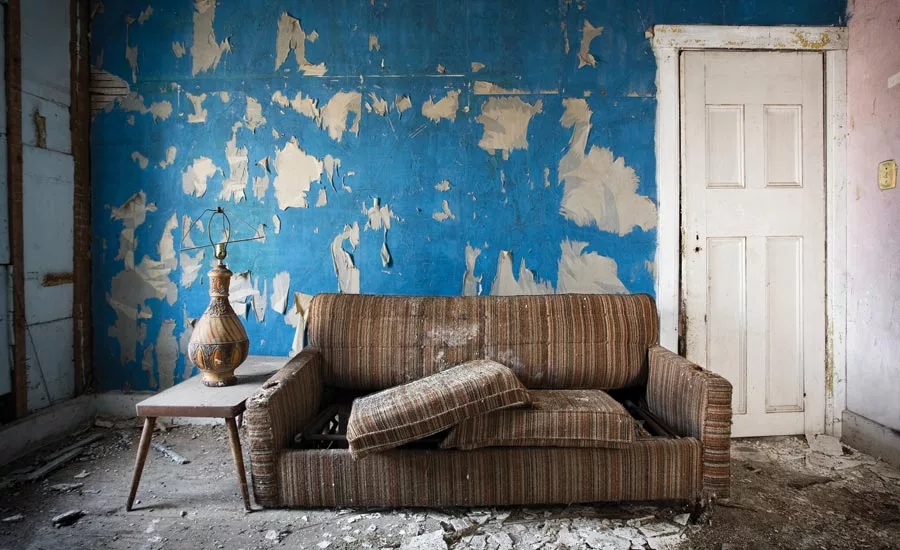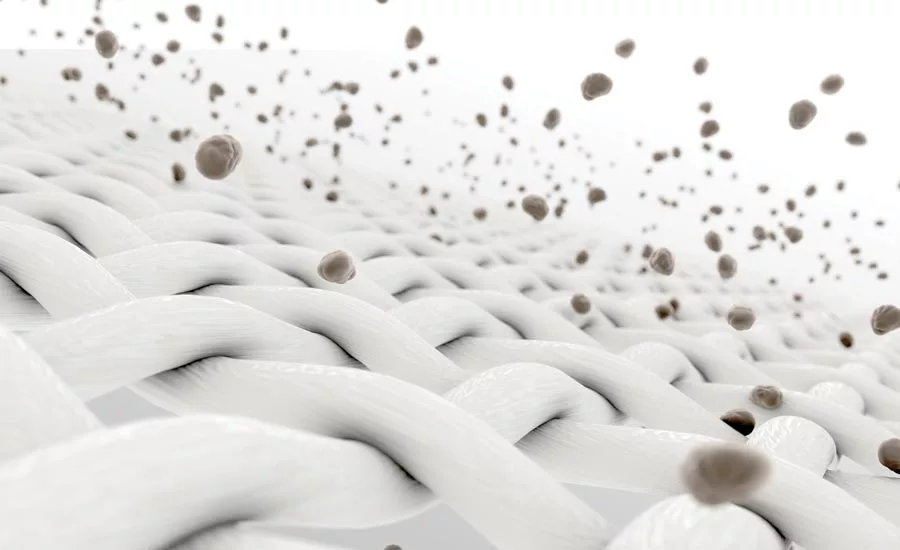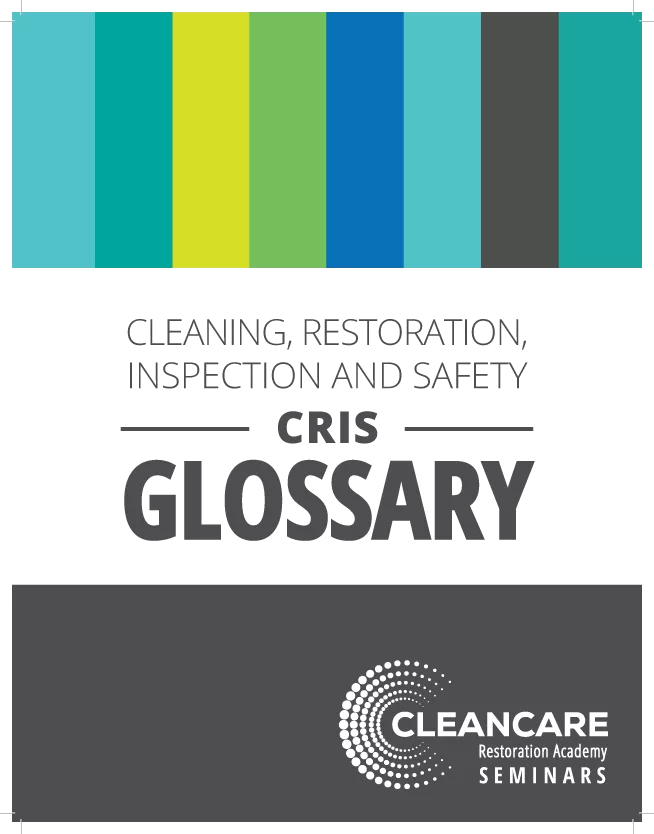Restoring For Safety and Health



Question: If you hired a restoration firm and paid them to restore your structure and contents, would you expect them to clean strictly for appearance, or should the safety and health of workers and your family be the primary concern?
Given a choice, which would it be: appearance or safety and health?
“Well, the answer’s obvious.” you say, “Of course I’d choose safety and health over appearance any day!”
Exactly; but don’t you think your restoration customers feel the same way?
To actually remove particles, gases and biologicals that create a potentially unhealthy environment, restorers must slow down, use well-maintained equipment and be trained and certified in multiple restoration disciplines.
“But Indoor Environmental Quality (IEQ) issues are far too complicated for me to grasp,” you say. “I barely can keep up with technical restoration issues.”
I used to feel exactly the same way. That’s until I came to understand that IEQ issues aren’t all that complicated – especially on the prevention side. Let’s summarize the three major categories of contaminants and see if that doesn’t clarify things somewhat for the average restorer.
Environmental contaminants fall into three basic categories:
- Particles – The human lungs cilia can trap particles down to about 10 microns in size. Smoke particles (0.1-4 microns) can penetrate deeply into delicate lung tissues where they can have a cumulative adverse effect over time. In our industry, particle contaminant also can include: asbestos (from deteriorating insulation or building materials during demolition), lead (lead-based paint), fire contaminants, biologicals (fungi and bacteria associated with aerosolized Category 3 water or prolonged drying), or just plain old household pollen, dust and dirt.
- Volatile Organic Compounds (VOCs or gases) – Anything from exhaust emissions, to dry-solvent vapors, to radon – all fall in this category. Interestingly, many restoration chemicals used to be significant contributors here because of their VOC content. But responsible product formulators have largely solved this problem.
- Microbiologicals (micro = microscopic, bio = life) – Here we’re talking about all those smelly substances resulting from living things growing and decomposing soils, and even building materials themselves. It includes the dreaded “black, toxic, killer molds” that are such a hot topic in the media today despite the fact that color is irrelevant; molds are “toxigenic” rather than toxic, and no normal person dies from household mold exposure. It includes water borne bacteria that are found everywhere and, given proper growth conditions, are waiting to amplify and decompose organic soils and materials.
“Good grief! This is getting a bit complicated,” you say. “Where and when did all this stuff become such a problem?”
Answer: only a few millennia ago when man began living on the face of the earth. Contaminants – really soils –have always been there. It was when man began enclosing himself, and the air he breathes, in increasingly sophisticated shelters (caves to condos) that pollutants became a problem. In fact, the energy conservation movement of the 1970s made the problem worse by eliminating air leaks (drafts) from our homes and businesses. By trapping conditioned air in structures and not exchanging it with fresh air from outside, we also trap contaminants, recirculate them time and again, and eventually, allow them to accumulate in the air we breathe. The result? IEQ problems.
So what do we do about all this IEQ stuff? Well, that’s where restoration professionals come in.
The following are seven guidelines for healthy restoration offered by the U.S. EPA. Look them over and see if they don’t make sense to you.
- Provide for the safety of all human beings before, during and after cleaning. OSHA regulations lay out specific requirements for safety compliance. Problem is, too many cleaning firms ignore these requirements, and regulators seldom check.
- Clean for health first and for appearance second. Fortunately when you clean for health, you also get outstanding appearance. But it doesn’t necessarily follow that better appearance produces a healthy environment.
- Maximize the extraction of pollutants from the building. The World Health Organization’s definition of cleaning includes: “locating, identifying, containing, removing and properly disposing of soils and pollutants.” Professional restorers must concentrate on this important goal. Otherwise, dirt or contamination might be less visible, but still present, and have a potentially damaging effect on property and occupants.
- Minimize chemical, particle and moisture residue. Most agents used in restoration are safe, but some leave residues that cause resoiling and even potential health effects. Particles left behind can become airborne and result in respiratory irritation. Prolonged drying (moisture) can result in resoiling, and eventually, microbial growth that can trigger allergies or asthma attacks.
- Minimize human exposure to contaminants, cleaning chemicals and cleaning residues. Both during and after restoring, professionals should make sure that neither they, nor their customers are exposed to HAZMAT.
- Evaluate cleaning in relation to the total environmental system, not just part of the system. Fabric and surface cleaning is only part of the solution to unhealthy environments. Trained, certified restorers can advise property owners of other strategies to improve IEQ.
- Dispose of cleaning wastes properly. Finally, when soils are removed, or unsalvageable materials have been packaged during restoration, they must be disposed in an environmentally-responsible way.
OK. Specific to the restoration industry, what can restorers do to maintain IEQ?
1. Fire and smoke restorers should ensure that:
- Fire damaged sites are adequately ventilated during initial inspection and restoration work;
- Appropriate PPE is available for workers and occupants during inspection and evaluation, and inventorying and packing;
- Engineering controls, along with managed airflow, are used to contain contaminated areas, or any area during deconstruction, to avoid aerosolizing contaminants, HAZMAT or debris;
- HEPA-filtered vacuum cleaners are used for initial dry soot removal to avoid particle aerosolization and cross contamination;
- HEPA-filtered air filtration devices (AFDs) are used to control particle aerosolization during structure and contents cleaning, particularly when occupants or workers are present in work areas, and all restoration products – cleaners, sealers, deodorants – are evaluated for the presence of VOCs, and products that have been evaluated and approved for use in indoor environments are substituted.
2. Water damage restorers, particularly on Category 3 losses, should ensure that:
- Airmovers not only operate safely (properly grounded electrical cords, protective screens on inlets and outlets), but also that screens, fan blades, and squirrel cages are clean and free of dust, microbials and contaminants from previous jobs;
- Dehumidifier filters, coils and drip pans are thoroughly cleaned and decontaminated after each job;
- AFD components (fans, ducting) are clean and well maintained, with new filters before placing them on successive job sites;
- Thorough cleaning takes precedence over antimicrobial application;
- Low-VOC antimicrobials are selected and used properly, always following label directions, and recording dilution rates and the quantity of dilute product applied;
- Recommendations are made for post-remediation evaluations, performed by qualified IEPs, and conducted after unsanitary water losses, and
- Unsalvageable microbially contaminated materials are packaged and disposed properly.
3. Deodorization and decontamination restorers should ensure that:
Environmentally-friendly and approved products (cleaners, EPA-registered disinfectants) are used;
- Appropriate PPE is available to workers;
- OSHA regulations regarding bloodborne pathogens are followed;
- Contaminants are properly packaged and disposed, and
- Equipment is decontaminated thoroughly before loading for transport, and a second time before being returned to storage in the restoration facility.
Cleaning for health must become a priority for true professionals. Indeed, today’s informed consumer should demand more of restorers who service their homes or businesses. Appearance only is no longer an acceptable criterion for evaluating results. When customers call a restoration firm, they should be assured that the safety and health of workers and occupants is the company’s first priority.
After all, it’s not just occupant or worker health, but also the restorer’s reputation that is at stake.
Looking for a reprint of this article?
From high-res PDFs to custom plaques, order your copy today!






